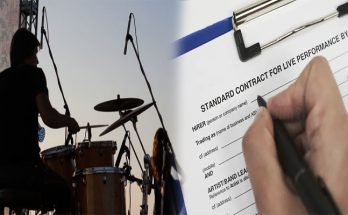There are lots of types of music contracts, and it may be confusing to know which a single to sign. A record deal, for example, requires the record label providing a musician dollar for recording a song. This dollar is known as an advance, and the musician need to repay it by way of royalties from future operates. It truly is a popular practice for artists to refuse to sign these contracts, so they will avoid paying them back. But, when a musician doesn’t would like to make a payment, there are a few issues to remember.
An ESWA (Extended-Term Writing Agreement) is among the most common types of music contracts. Within this deal, the writer is granting the music publisher the copyright to all of their compositions. This means that any copyright that may be used without permission is deemed the publisher’s property. This kind of deal is generally only presented to writers that have a proven track record of writing hit songs. A writer has to demonstrate that their past works are worthy of such an arrangement prior to a publisher will supply them an EWSA.
An exclusive music contract enables the music business to handle all 3 variables relating towards the artist. These variables incorporate The House, Extent, and Cash. An exclusive music contract can contain all three of these. The latter is specifically valuable if the artist’s music is usually a big brand name. A 360 deal also makes it possible for the music organization to profit from other locations of the artist’s profession, for instance merch and physicals.
A different form of music contract includes a transfer of rights, which provides the organization exclusive rights to carry out the song. The musician agrees to enable the music corporation to make use of the song for promotional purposes. The contract also specifies costs and profit sharing for the musician. This can be an essential variety of music contract for musicians because it makes it possible for the artist to sell merch and merchandise. This sort of music contract can be a typical type within the music industry.
A 360-type music contract contains the following 3 variables. In essence, the music organization wants to make funds by selling all rights. For instance, the business could possibly sell cover songs, master recordings, and images. It may also sell synch licenses or sublicenses, too as sell merch. The artist pays the manager a particular percentage of their earnings. This kind of contract is generally known as a “360 deal”.
While you will find a number of music contracts, essentially the most significant type is the one that protects the rights of each the writer and the publisher. As opposed to most other types of contracts, 360-type bargains can protect the interests of each parties. Despite the complexity of those agreements, it really is essential to understand them and sign them. A good contract will help you shield oneself and your music. And with appropriate legal protection, you will not need to worry concerning the dollars.
The term of a contract refers towards the length of time that the agreement lasts. A record cope with a music publisher can final a year, or it might last several years or much more. A record deal with a record corporation can last for years. A 360-type music contract may be extended for a number of album cycles. When this happens, the copyright from the function will be in the hands with the record corporation. There are many other types of music contracts, so it’s crucial to understand the distinction involving them and also the ones that apply to you.
a one-sided agreement, which protects the rights of both parties. The rights of the singer and the music company are mutually exclusive. The latter party can resell the master recording or use the logos and photos to promote their product.
Bilateral and unilateral contracts are the most common types of music contracts. In a 360-type contract, each party pledges to perform a certain action or produce a minimum product. The artist, meanwhile, agrees to pay the manager a percentage of their earnings. The contract is called a ‘360-type’ and will depend on how the artist defines the term in the agreement. Once the recording commitment is defined, the musician will be required to deliver a minimum number of master recordings.





